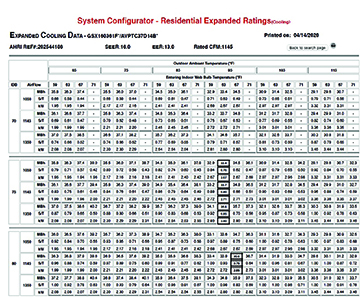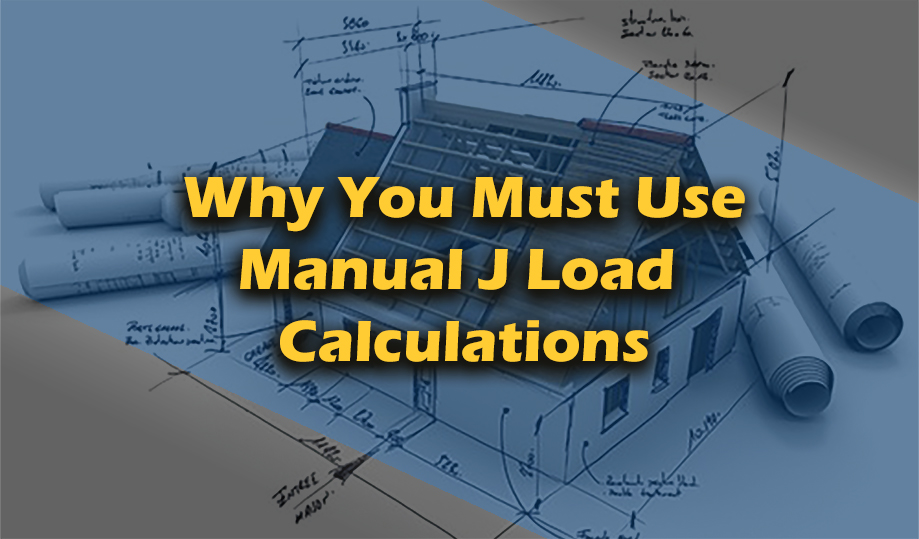I was sitting back in my office jawboning with my friend Bob about the weird Central Texas weather we are having when he suddenly blurts out, ‘It’s raining in my house.’
I lean forward into the phone. Bob continues, ‘Our house is brand new, 2500 sq. ft. in size, and has a high-efficiency five-ton air conditioning system.
‘We’re putting towels under the tall windows and French doors in the living room to keep the water off the hand-scraped walnut flooring. The doors are swelling, plus our forearms are sticking to the arms of the leather couch,’ he adds.

I’ve lost count how many times I’ve heard the same kind of story. I’ve become a first responder. In fact, my first response is, ‘Bob, did anyone do a Manual J Load on your new house?’
‘I read about that on your Manual J Design website,’ he answers. ‘So, I asked my builder if they had one. He asked the HVAC guy for it. A couple of days later the builder calls me and he says the HVAC guy did a modified Manual J, but now can’t find it. His computer crashed. So, I thought I’d better call you, Bob continues.
‘The things that you say about Manual J and the problems with oversizing make so much common sense. Would you be willing to help us out?’
To avoid this scenario, every HVAC contractor should design HVAC systems using Manual J load calculations, Manual S equipment selection, and Manual D duct design methods. We began performing computer-based load calculations at our service company 27 years ago. Over the years basic design methods haven’t changed that much, but the housing stock has.
Rules-of-Thumb Need to Evolve
Good design methods from the 1970s gave us a reliable rule-of-thumb for houses built in the 70s.
However, each time building practices and codes change, the rules-of-thumb should have changed along with it. They didn’t. By the 1990s, 650 sq. ft./ton could be used on many houses. It wasn’t.
After the year 2000, major code changes drove that ratio up to 750 sq. ft./ton. Yet 500 sq. ft./ton still ruled the design world. Who knows? It may rule longer than Queen Elizabeth.
How do you guess the size of equipment for a 1500 sq. ft. house built in the 1970s, upgraded with foam in the attic, and all new windows?
You shouldn’t.
Local Codes Have Evolved
Many local codes now require Manual J and Manual S calculations for every new home and every remodel that changes the house loads.
Sadly, very few contractors know how to properly execute either calculation. The typical HVAC contractor still selects an air conditioning system for a home based on their trusty 500 sq. ft./ton rule.
Unfortunately, most contractors are afraid to change this long habit of ‘guesstimating.’ This ‘fear factor’ holds many contractors in design paralysis. They are more comfortable with a familiar problem than an unfamiliar solution.
For example, the effective R-value of a building envelope is dramatically increased by using spray foam and other high-efficiency insulation measures such as SIPs, ICFs, and dense-pack cellulose. It makes sense that the size of the air conditioning equipment should decrease, right?
We’ve spent decades redesigning, testing, measuring, and rescuing homeowners from their poorly designed HVAC systems.
We’ve seen how stuck our industry is on silly traditions. Folks are willing to spend tens of thousands of dollars to have a quiet comfort system in their home. But we aren’t willing to spend half a day to design the system right or several days learning HOW to do it right.
Making Sense of Manual J
HVAC contractors are in the environmental air conditioning business. This is defined as treating the air to control temperature, humidity, cleanliness, ventilation, and circulation to meet human comfort requirements. It is the responsibility of the HVAC contractor to properly match equipment size to the heat load of the house, then design the necessary dehumidification functions, and provide adequate mechanical ventilation for today’s tighter, potentially more ‘toxic’ indoor environments. It’s not that hard to do.

Click Below for next page













Bottom line, Manual J is still just guessing. It’s a sad commentary that in this age when we actually can measure the heat loss/gain of the home ; we really don’t care enough about the homeowners comfort to adopt new technology. We are only interested in selling the largest unit; to make the most income per job. Wouldn’t it be far better to have a happy customer; that would happily recommend us to their friends and neighbors? The best advertising is still word of mouth. Don’t be the last Contractor in your market to adopt 21st Century technology.